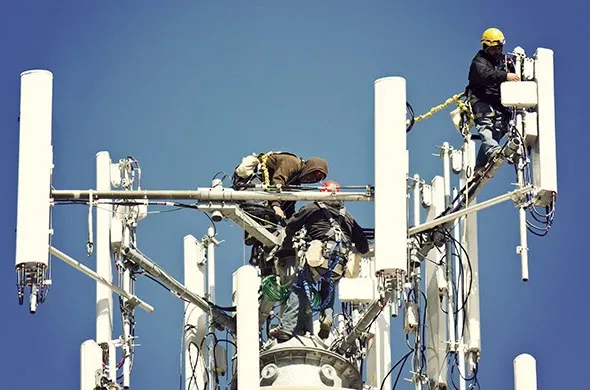GSMA Urges Governments to Accelerate 6G Spectrum Planning
The GSMA claims that governments need to accelerate 6G spectrum planning.

The WhiteSpace Alliance (WSA), a global industry organization enabling sharing of underutilized spectrum, is working with the Government of India to bring cost-effective broadband services to its citizens.
In a recent series of meetings with telecommunications regulatory and Ministry officials, WSA leadership promoted the use of available TV band channels (“white spaces“) to provide widespread broadband connectivity to support the nation’s “Digital India“ initiative. WSA believes these unused TV Band channels can serve as fixed wireless access spectrum for middle- and last-mile connectivity to villages as well as many small and medium enterprises. This infrastructure could also support a wide range of e-Payment, e-Governance and e-Services applications.
“We had highly productive meetings with key members of the Indian Government. Utilizing TV band spectrum can help make a digitally-empowered India a reality. Technical standards are in place, products are available and similar policy frameworks have already been implemented in other countries. With appropriate policies in place, the vision of Digital India can move forward rapidly, and even traditional wireless operators can have a play.“, said Dr. Apurva N. Mody, Chairman of WhiteSpace Alliance.
Under the nation’s current program, BharatNet, India’s National Fiber Optic Network, is expected to provide a high speed backbone network to a central point within a cluster of villages known as Gram Panchayats. While last mile connectivity within individual villages could be supported by a variety of access methods such as Wi-Fi and/or LTE, the mechanisms to deploy cost-effective middle-mile connectivity between these network levels have not yet been specified.
The powerful propagation characteristics of TV band spectrum make white space solutions ideal for providing such middle mile connectivity to rural and remote areas. Wired infrastructure is not cost effective to deploy in these situations, and vegetation makes line-of-sight wireless solutions unreliable. In addition, white space devices are easy to install, require relatively little power, and are reliable in difficult environmental conditions, minimizing ongoing implementation costs.
"White space technologies overcome many cost barriers associated with large scale broadband deployments. Better propagation means that signals travel longer distances, antennas can be deployed at rooftop height instead of on large towers, and network configurations don’t require line-of-sight.“, said Hemant Mallapur, founder of WSA member Saankhya Labs.
Adoption of white space solutions continues to accelerate around the world. The United States, United Kingdom, Singapore and the Philippines have formally issued regulations, and deployments have begun. Regulations and field trials are also underway in Canada, Colombia, South Korea, and Indonesia, as well as Malawi, Botswana and South Africa. White spaces have been recognized by both the International Telecommunications Union and the United Nations Commission on Science and Technology for Development as an important mechanism to bridge the global “digital divide“.
WhiteSpace Alliance, developer of Wi-FAR and WSAConnect interoperability specifications, has a following of more than 200 major commercial, academic, government and regulatory organizations around the world. WSA member organizations benefit from access to technical specifications that decrease development costs; expanded access to global markets, regulators and government agencies; and ongoing marketing support at no additional cost. Consumers benefit from a multi-vendor, interoperable ecosystem that brings down the overall cost of broadband access.